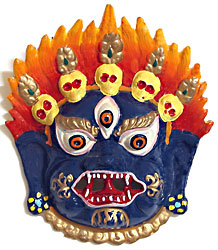
Terresa M. Fagan |
 |
 |
 |
| HOME |
| Resources |
| Lesson 4 Finding Global Connections Through Art |
| Lesson 7 Sacred Circles |
LESSON FOUR- Discovering Global Connections Through Art
OBJECTIVE: Students will learn to identify similarities in a variety of cultural artwork from across the globe. See Resources page for various links for selections.
Expect to take at least three days on this lesson.
*Day one - Teacher explains and models lesson. Students research and find two art selections, one from the Himalayan region and one from North or South America. Students should try to find
selections from similar time periods.
*Day two - Students will set up a grid of elements and principles of design comparing characteristics of each selection. See example below.
*Day three - Students present their selections and comparisons to the class.
Possible Characteristics to Compare:
Place of Origin
Date
Possible Use/Purpose
Color
Line
Texture
Materials Used to Create
Once the comparisons have been made, make a statement of signficance about the human connections that appear in both cultural artforms.
Students present both art selections and the comparative analysis to the class.